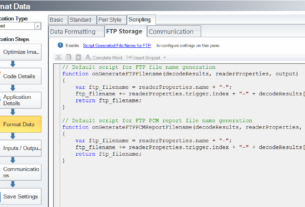In the world of enterprise resource planning (ERP), JD Edwards (JDE) is a popular choice for businesses that need an all-in-one solution to manage their operations. With JDE, companies can handle everything from accounting and finance to manufacturing and distribution.
One critical aspect of using JDE is managing your data. Whether it’s importing new data or updating existing records, it’s essential to have a reliable tool that makes the process as efficient as possible. That’s where the JDE data selection import tool comes in.
In this article, we’ll take a closer look at what the JDE data selection import tool is, how it works, and why it’s such an important tool for any business using JDE. Let’s dive in!
What Is the JDE Data Selection Import Tool?
The JDE data selection import tool is a software module that allows you to quickly and easily import data into your JDE system. With this tool, you can select specific fields from your source data and map them to corresponding fields in your JDE system.
The tool supports a wide range of file formats, including Excel spreadsheets, CSV files, and even XML documents. This flexibility makes it easy to work with data from virtually any source.
How Does It Work?
To use the JDE data selection import tool, you first need to define the parameters for your import job. This includes selecting the source file format and specifying which fields you want to map to your JDE system.
Once you’ve defined these parameters, the tool will automatically generate a template file that matches your specifications. You can then populate this template with your source data and save it as a new file.
Finally, you simply upload your new file into the JDE system using the import tool. The tool will automatically parse your data and update your records accordingly.
Why Is It So Important?
There are several reasons why the JDE data selection import tool is such a critical component of any JDE system. Here are just a few:
1. Saves Time and Reduces Errors
Manually entering data into your JDE system can be time-consuming and error-prone. With the import tool, you can streamline the process and eliminate many of the common mistakes that come with manual data entry.
2. Increases Data Accuracy
The import tool allows you to map specific fields from your source data to corresponding fields in your JDE system. This ensures that your data is accurately entered into the correct fields, reducing the risk of errors.
3. Supports Multiple Data Formats
The import tool supports a wide range of file formats, making it easy to work with data from virtually any source. This flexibility means that you don’t have to waste time converting files or manually reformatting your data.
4. Provides Greater Control Over Your Data
By allowing you to select specific fields for import, the tool gives you greater control over how your data is managed in your JDE system. This means that you can easily update specific records without having to modify entire datasets.
5. Improves Workflow Efficiency
With the import tool, you can quickly and easily upload large amounts of data into your JDE system. This improves workflow efficiency, allowing you to focus on other critical tasks rather than spending hours manually entering data.
Conclusion
If you’re using JDE for your business operations, then the JDE data selection import tool should be an essential part of your toolkit. By streamlining your data import and management processes, this powerful software module can save you time, reduce errors, and improve workflow efficiency.
So why wait? Start exploring how the JDE data selection import tool can help take your business to the next level today!
References:
https://docs.oracle.com/cd/E16582_01/doc.91/e15128/working_with_the_import_tool.htm#EOAIJ266
https://www.oracle.com/applications/jd-edwards-enterpriseone/
https://en.wikipedia.org/wiki/JD_Edwards_EnterpriseOne




